How To Organize a Project In Phases
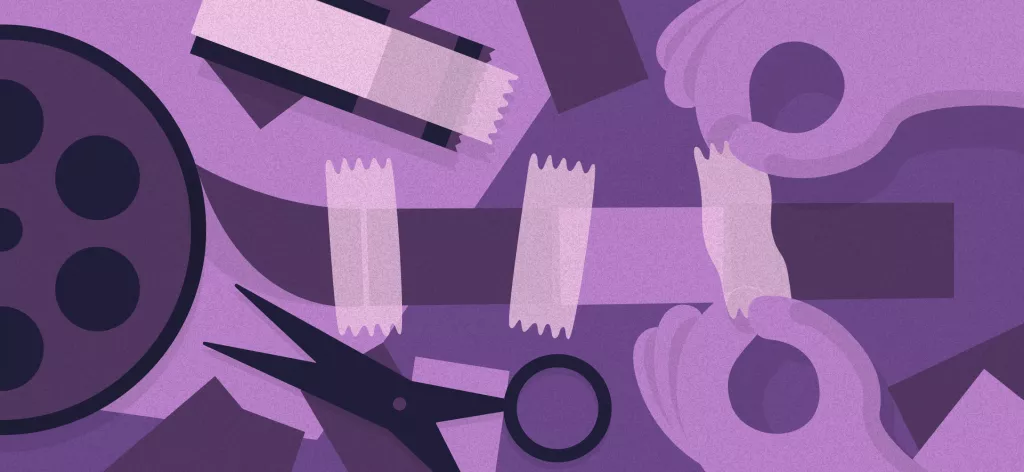
We Help Your Agency Reach New Heights
Switch from multiple tools and spreadsheets to one scalable agency management system.
Running a long-term project with a big budget is every project manager’s dream—and nightmare—all at the same time.
They bring in the big bucks, but big bucks also mean more risk. If you go 10% over budget on a big project, that’s thousands of dollars we’re talking about. It’s normal to stress about deals like that.
We bring you some practical advice to prevent you from hyperventilating every time you’re trying to figure out your margins.
Use Case #1: Dissecting a Project Into Phases
One of the first key roles of an agency project manager is to divide that big project into several chunks. It’s that simple. Like when studying for a big exam, if you split that horrendously thick book into smaller chapters, everything suddenly seems easier to comprehend.
Take a look at this example:
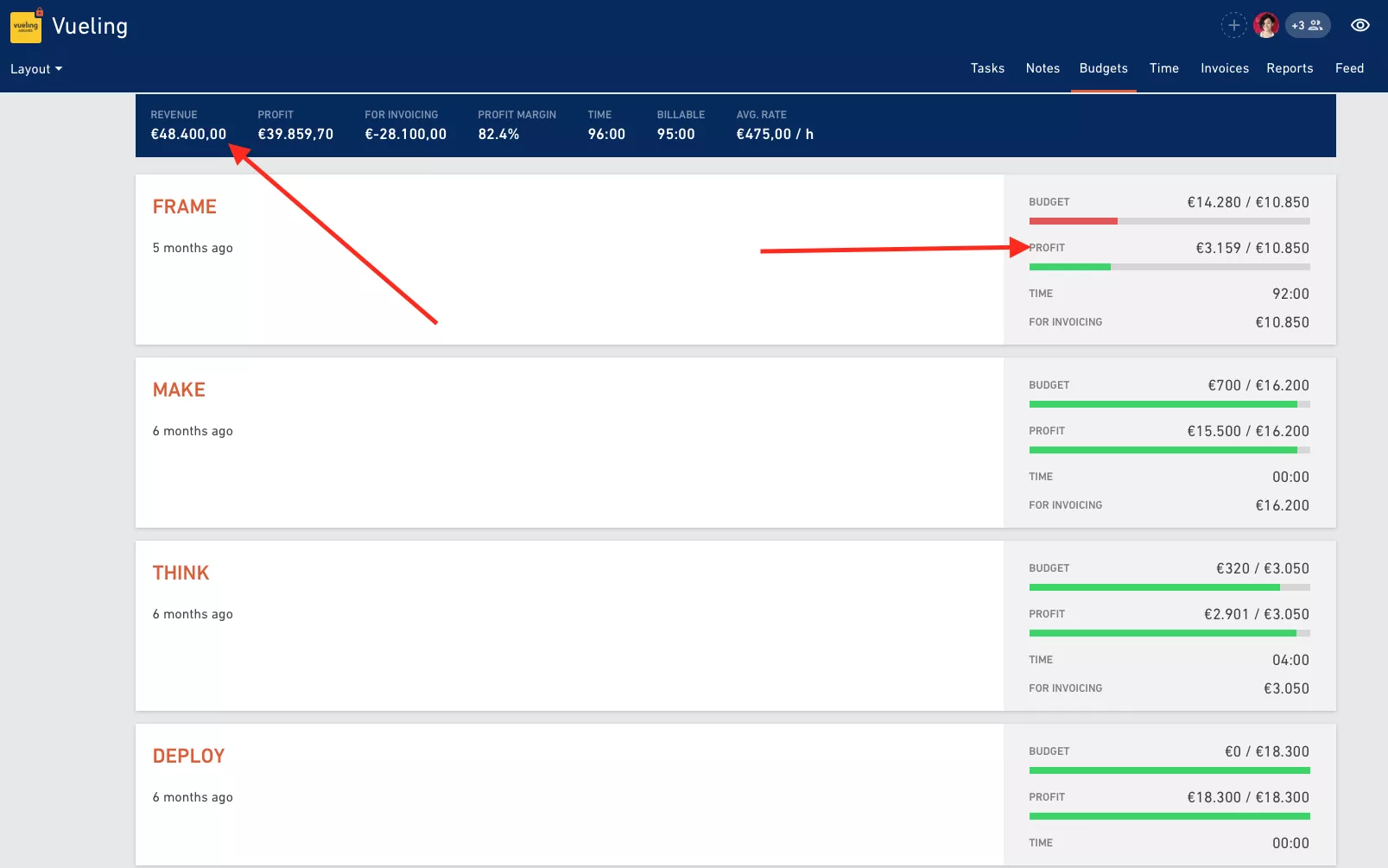
We’ve split a 48K project into four phases:
Frame
Make
Think
Deploy
These are chronological phases, but they can also happen simultaneously. The point is—each one has its separate budget and time estimate, and together they form a total project revenue of 48.400,00.
It’s easier to control the budget because it’s split up in phases. In this case, you can see we went over the budget with design hours. Instead of an initial estimate of 20 hours, we ended up spending 40 hours, which is double:
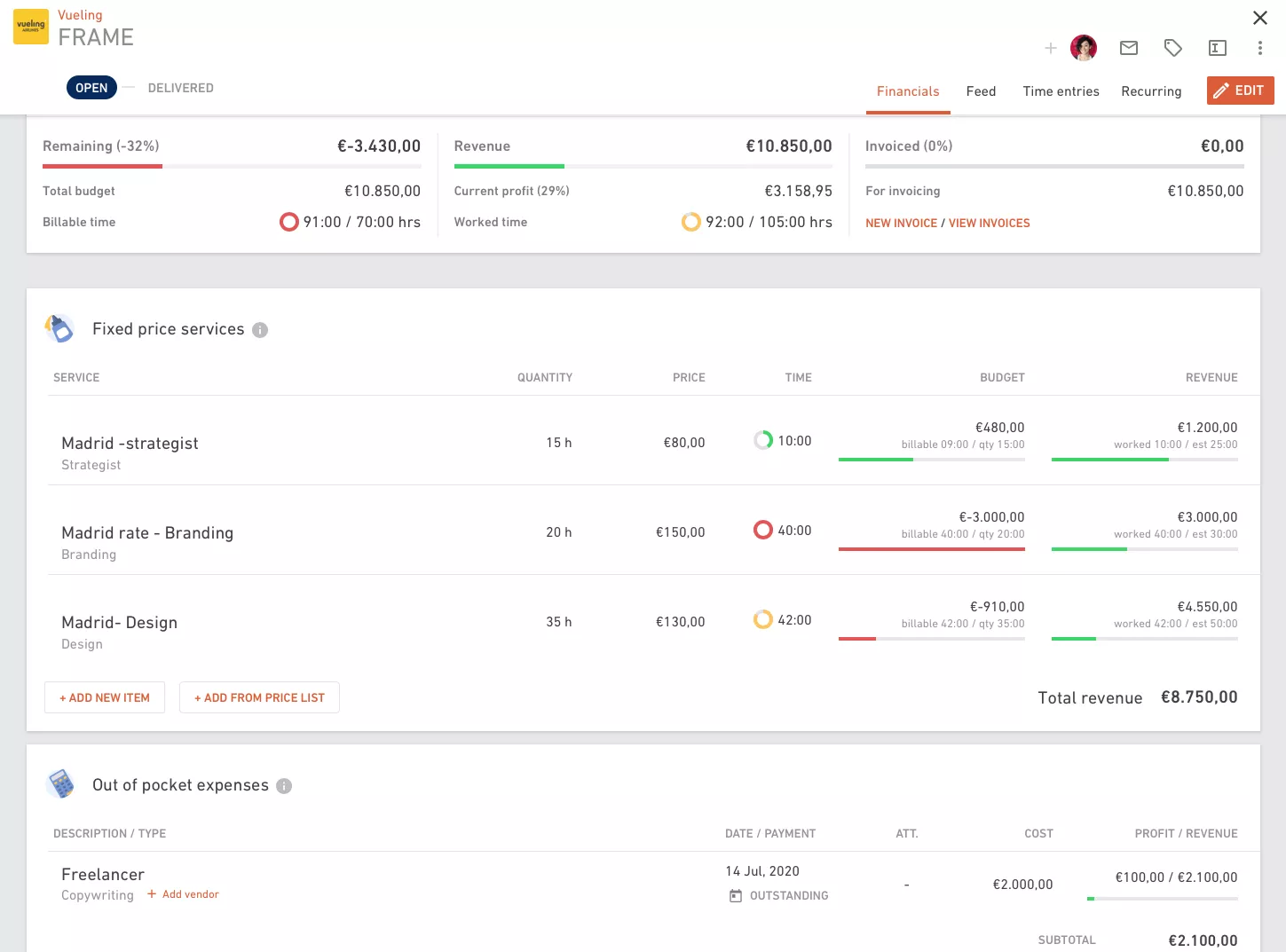
If we had managed this project as a single budget, afterward, it would have been hard to determine where we went wrong with our estimate. All the design hours would form a big bucket and we’d need to do a ton of digging to figure out what went wrong.
By splitting our project up into phases (separate budgets), we can easily identify that the design estimate was off in the Frame phase. That’s a learning we can use for future projects to improve our estimates.
Use Case #2: Micro-Level Vs. Overall Project Reporting
Splitting a project up into phases or deliverables by using budgets allows us to report on project financials on both an overall project level and a single budget level.

In this example above, we can see that overall, we still have $37.678,46 of the budget remaining on this Vueling project. However, the Frame phase went over budget. You can decide to look at things from a project perspective, or dig deeper into every single phase and compare them at once.
Use Case #3: Forecasting The Financial Success Of A Project Phase
If you split your project up into smaller chunks, you can also schedule resources for a particular phase of the project, like this:
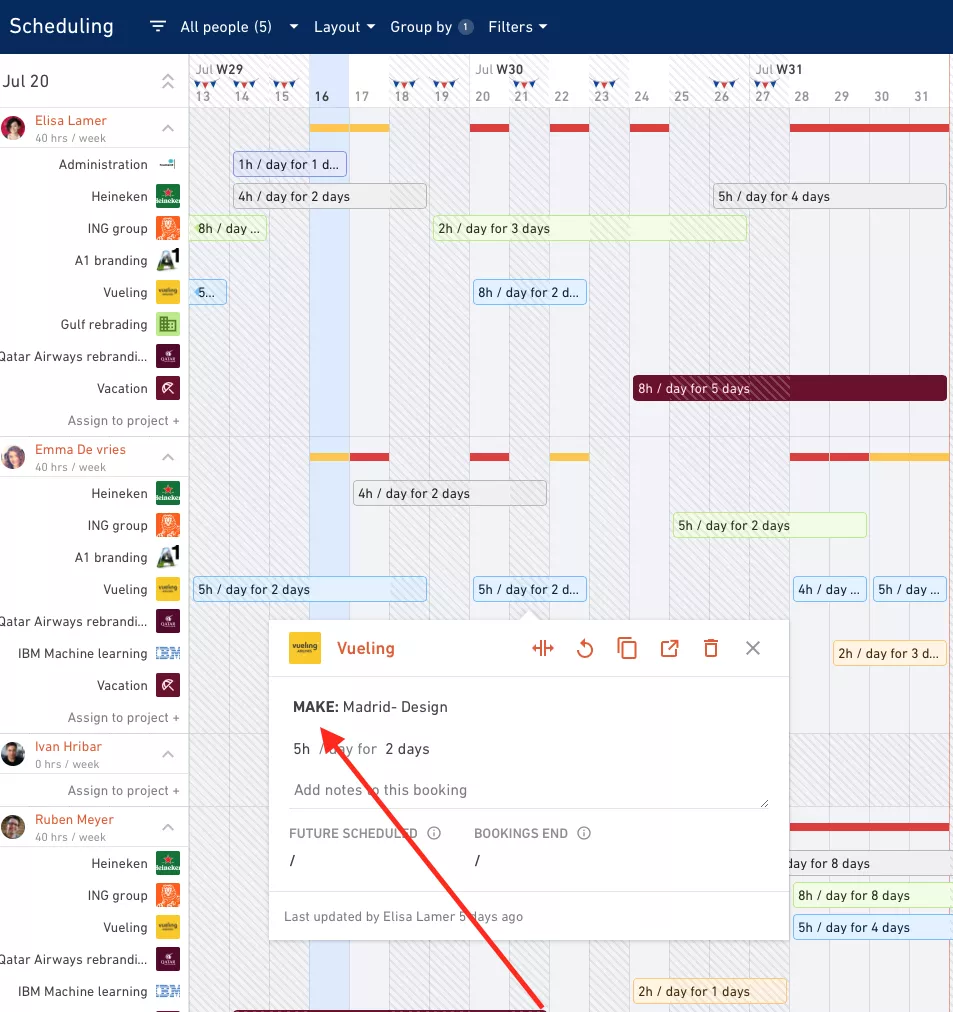
Based on the resources you’ve allocated, you can also forecast whether you’ll go over budget in a certain phase:
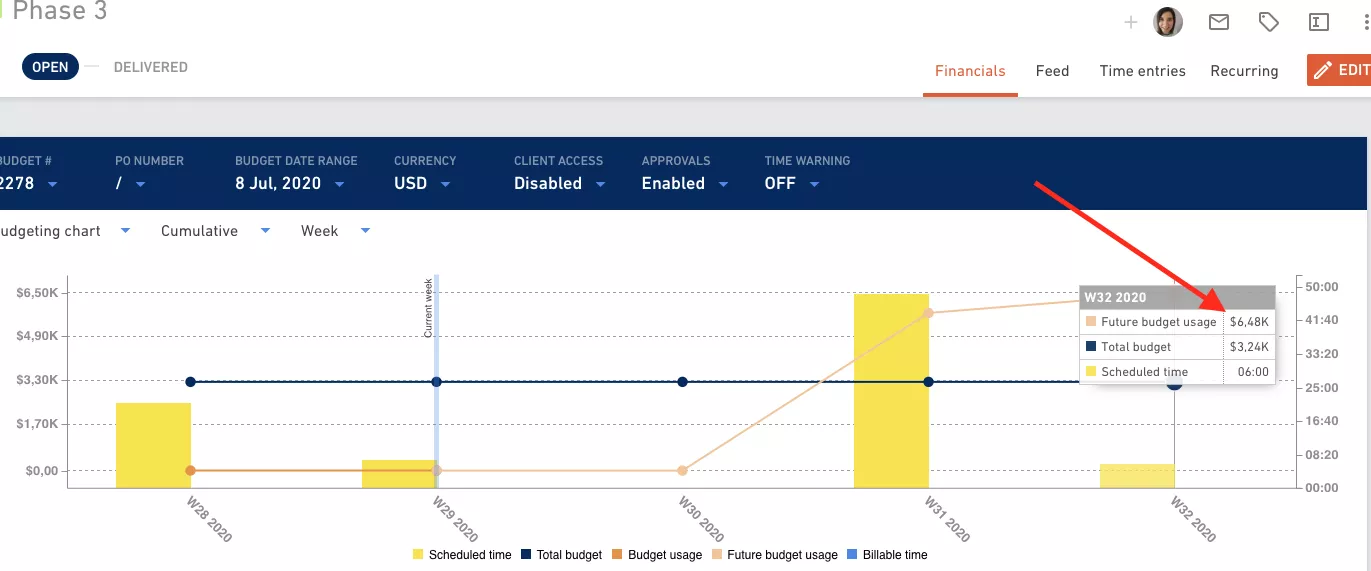
You can also create what-if scenarios with different types of resources for a certain project phase and monitor how that will influence budget spending or your future profit margin.
What’s more, you can look at those values at both a budget and overall project level.
Use Case #4: Making Time Tracking Easier For Your Team
When managing a project in phases in Productive, there are some benefits for your staff, too. This type of breakdown can make your teammates’ time tracking easier by cutting down on options when tracking time.
If your deliverables or phases are chronological and you know they won’t start until a certain date, you can move the start date:
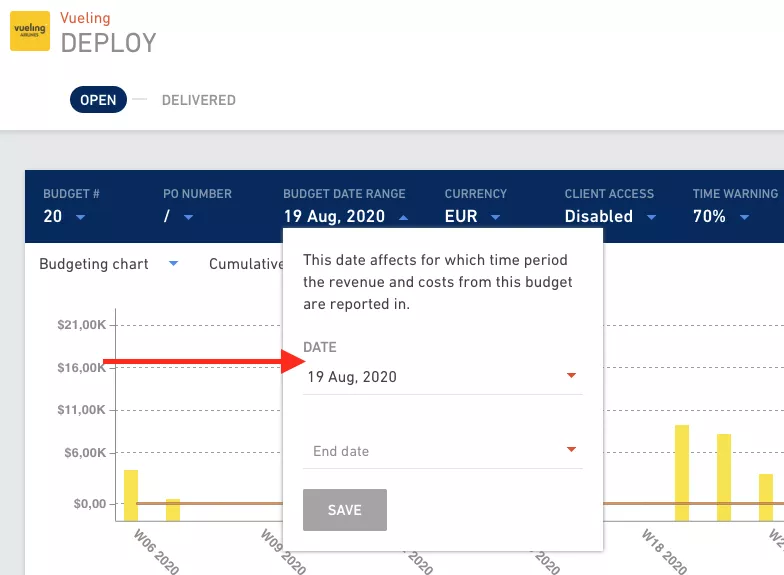
That will disable the whole phase from appearing as an option in the time tracking module.




